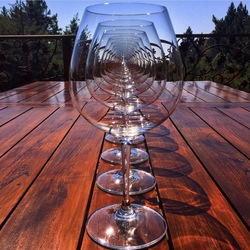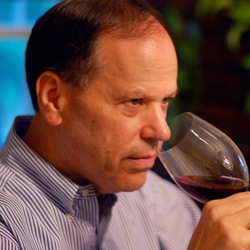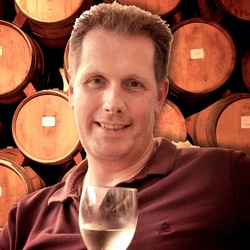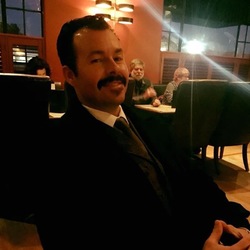Concrete
Matthews Cellars
Reserve Columbia Valley Sauvignon Blanc 2019
Crisp, complex, rich flavors of pineapple and guava. Lots of citrus that softens from the concrete — 4 years ago
Jeff Carrel
Les Darons Languedoc Grenache Blend 2017
Wow. We’ve been drinking Grenache blends- the 2017 is simply wonderful. Silly and smooth... no oak as it was fermented in concrete tanks. ‘Les Darons’ an affectionate expression for The Parents! Old vines Rock!!! — 5 years ago
Kosta Browne
One Sixteen Russian River Valley Chardonnay 2017
Pale golden color, complex aging, 34% new French oak-15 months, 30% stainless-4 months; 18% in Foudre for 9 months; rest concrete egg for 14 months. Aromas of stone fruits, oak, nuts, floral and spice. On the palate flavors of peach and pear with honeysuckle, integrated toasty oak and nice citrus tang. Long finish, ending with a wet stone mineral character. Outstanding! Will age well! — 5 years ago
Concrete
Old Vine Lodi Zinfandel 2013
Cherry, raisin, leather on the nose. Garnet color, leggy, pink peppercorns, underripe blackberry, hasn’t fully opened up. Leather, biting into a pencil, bone dry. I’m preparing to have pasta with this - I feel this is sweater wine. Jazz on a Saturday afternoon. Fire pit with crusty bread and grilling meats. Nutty creamy cheese or dark chocolate and berries. This is not at all a whimsical wine- no hammock - a chaise. But a deep chuckle would suit it very well. — 6 years ago
Concrete
Lodi Cabernet Sauvignon 2014
Would drink again! — 7 years ago
Château Brane-Cantenac
Grand Cru Classé en 1855 Margaux Red Bordeaux Blend 2005
I have a six-pack of this 05. I thought after 10 years in bottle, it would be interesting to check in on its evolution. While tasty, I’ll wait another 8-10 to open another. Even after 2-3 hours in the decanter, it’s still a very young adolescent. On the nose, slightly sour blackberries & dark cherries, dark currants, baked black plum, haunting blue fruits, anise, whiff of spice, steeped tea, dry stones, dry crushed rocks with dry top soil, caramel, vanilla with fresh & dry red florals. The body is thick & full. Tannins are starting to round out. It’s velvety on the palate. The fruits are; bright, fresh & ripe and really show the greatness of the 05 vintage. Dark currants, blackberries, dark cherries, baked black plum, haunting blue fruits, baked strawberries, cherries, raspberries on the long set, dark spice, clay & loamy dry top soil with crushed rocks, dry stones, cigar with ash, graphite, dry stems, slight herbaceous character, mint, used leather, clove, caramel, vanilla, fresh & dry red florals with violets. The round acidity is about perfect. The structure and length are still strong. The balance is in harmony. As for the long finish, it’s lush, ruby, rich and well polished. Photos of; Chateau Brane Cantenac, large wood vats, Henri Lurton and Estate vines. Producer notes and history...Chateau Brane Cantenac began in the early 17th century. At the time, the estate was known as Domaine Guilhem Hosten. Even that far back, wine was produced from the property. In fact, the wine was so highly regarded it was one of the more expensive wines in Bordeaux. It sold for almost as much money as Brane Mouton. This is interesting because of who went on to buy the vineyard in the 1800’s. The Baron of Brane, also known as “Napoleon of the Vineyards”, purchased the Chateau in 1833. At the time of the sale, the estate was called Chateau Gorce-Guy. To get the funds needed to purchase the Margaux vineyard, the Baron sold what is now called Mouton Rothschild, which was at the time of the sale, known as Chateau Brane-Mouton. Not such a good move with hundreds of years in hindsight! In 1838, the Baron renamed property taking his name and the name of the sector where the vineyards were located and called it Chateau Brane Cantenac. The Chateau later passed to the Roy family, who were well-known in the Margaux appellation in those days, as they owned Chateau d’issan. Moving ahead to 1920, the Societe des Grands Crus de France, a group of merchants and growers that owned several chateaux located in the Medoc including; Chateau Margaux, Chateau Giscours, and Chateau Lagrange in St. Julien, purchased Chateau Brane Cantenac. Five years later, M. Recapet and his son-in-law, François Lurton, took over Brane Cantenac along with Chateau Margaux. Lucien Lurton (the son of François Lurton) inherited Brane Cantenac in 1956. Today, the estate is still in the hands of the Lurton family. Brane Cantenac is owned and run by Henri Lurton. After being given the responsibility of managing Brane Cantenac, it was under the direction of Henri Lurton that large portions of the vineyard were replanted. Vine densities were increased, the drainage systems were improved and the plantings were also, slowly changed. The vineyard of Brane Cantenac is planted to 55% Cabernet Sauvignon, 40% Merlot, 4.5% Cabernet Franc and .5% Carmenere. Carmenere was used for the first time in the 2011 vintage. The only other Chateau I know that still uses Carmenere is Clerc Milon. The 75 hectare Left Bank vineyard of Brane Cantenac is essentially unchanged since it earned Second Growth status in the 1855 Classification. At least that is the case with the 45 hectares used to produce the Grand Vin of Brane Cantenac. Those 45 hectares are planted surrounding the Chateau. Those vines are located just in front of the Cantenac plateau and are the best terroir that Brane Cantenac owns. They have other parcels, which are further inland and much of those grapes are placed into their second wine, Le Baron de Brane. Those additional hectares can be divided into 3 main sections. Behind the Chateau, they have 15 hectares of vines on gravel and sand, 10 hectares across the road with sand, gravel and iron and a 13 hectare parcel with gravel called Notton, which is used for their second wine. The vineyard is planted to a vine density that ranges from 6,666 vines per hectare on the plateau and up to 8,000 vines per hectare for the vines located behind chateau, in their sandier soils. The higher levels of vine density are always found in the newer plantings. The terroir of Brane Cantenac consists of deep gravel, sand and clay soil. Experiments in the vineyards are currently looking at becoming more organic in their vineyard management. Today, more than 25% of Brane Cantenac is farmed using organic farming techniques. It is expected that over time, the amount of hectares farmed with organic methods will be increased. Brane Cantenac has gone through 2 relatively recent modernization’s in 1999, when they added began adding the first of their smaller vats to allow for parcel by parcel vinification and then again in 2015 when they completed a much more complete renovation of their cellars and vat rooms. While Brane Cantenac is a traditional producer, they are no stranger to technology as they were one of the first estates to embrace optical grape sorting machines. In very wet vintages, they can also use reverse osmosis. To produce the wine of Chateau Brane Cantenac, the wine is vinified in a combination of temperature controlled, traditional, 22 oak vats, 18 concrete tanks and 20 stainless steel vats that vary in size from 40 hectoliters all the way up to 200 hectoliters, which allows for parcel by parcel vinification. 40% of the fermentation takes place in the oak vats. The oldest vines are vinified in vats that are selected to allow for separate parcel by parcel vinification. The younger vines are vinified more often together in the same vats. However, the Carmenere is entirely micro-vinified, meaning that those grapes were completely vinified in barrel, using micro-vinification techniques. This can also happen because the amount of grapes produced is so small. Some vats can be co-inoculated, meaning they go through alcoholic fermentation and malolactic fermentation simultaneously. At Chateau Brane Cantenac, malolactic fermentation takes place in a combination of French oak tanks and barrels. The wine of Brane Cantenac is aged in an average of 60% new, French oak barrels for 18 months before bottling. The initial 2 months of aging is done with the wine on its lees, which adds more depth to the wine. There second wine is Le Baron de Brane. Le Baron de Brane is not new. In fact, previously, the second wine went under the name of Chateau Notton, which took its name from one of the main parcels where the grapes were planted. During the late 1950’s and into the 1960’s, having a second wine was important as the estate declassified 3 vintages, due to extremely poor, weather conditions in 1956, 1960 and 1963. Production of Chateau Brane Cantenac is about 11,000 cases per year. — 8 years ago

Azienda Agricola COS
Nero di Lupo Terre Siciliane Nero d'Avola 2017
Extremely bright acidity and lean body style. Aromas and flavors of cranberry, pomegranate, plum and volcanic ash. Hints of black olive and black licorice. Light tannins as this one is aged in concrete tanks. Relatively low alcohol (11.5%). Takes a bit of a chill beautifully so great for sipping on a hot day. Biodynamically farmed fruit. Tastes unique because there is zero manipulation! — 4 years ago
Scribe
Carneros Pinot Noir 2018
👁This wine is pale ruby with a delicate haze.
👃On the nose, it offers medium(+) intensity of youthful aromas, including notes of ripe cherry, strawberry rhubarb, fresh raspberry, 🍒🍓 also tulip🌷, violet, red licorice, fennel, dill, nutmeg, and wet moss.
👄On the palate this wine is dry. It has med (+) acidity, a medium body, medium alcohol, medium tannins, and medium(+) intensity of flavors consistent with the nose. It also has a medium(+) finish. I find it has good complexity and balance. 👌👌
This wine was fermented with native, wild yeast in concrete or steel and then aged in neutral oak barrels for about six months. According to the @scribewinery website, it comes from "vineyards planted with equal parts of two California heritage clones ideal for the region’s dense clay: Martini and Pommard. The Martini grapes add spice and fresh, high tones complemented by the Pommard’s natural earthiness."
Scribe, Carneros, XII. Beauty Blue, Pinot Noir, Vintage 2018. ABV 13.5%.
Los Carneros, meaning 'the rams' in Spanish, is a unique wine region because it is shared between Sonoma County and Napa Valley. It is one of my favorite places in Califorina for Pinot Noir. With the coastal breezes and fog channeling inland from San Pablo Bay, the vines have a combination of sun and cooling moderators, to aid in both the ripening and the preservation of acidity / brightness of character, which can ultimately lead to a well-balanced, but also well-concentrated wine.
I picked this up at @france_44 and would definitely buy it again. — 5 years ago

Mer Soleil
Silver Unoaked Santa Lucia Highlands Monterey Co. Chardonnay 2017
First, this wine was previously in a grey bottle, Why? Beginning with the 2017 vintage, the wine is in a clear bottle, which to me has a much better appeal, to see the wine! Fruit sourced from Monterey County, pale lemon-lime color with aromas of tropical and citrus fruits and slight biscuit notes. This wine is unoaked and fermented in stainless and concrete tanks. On the palate, crisp, with flavors of apple, melon and peach adding in some citrus zest. Balanced acidity, medium body and finish ending slightly on the creamy side. Drink young while its fresh! Tasting Sample! — 6 years ago
Azienda Agricola il Borghetto
Montigiano Sangiovese 2014
Medium ruby. More soil character than most of the other Borghetto wines in this range- mushroom and potting soil notes coming through. Wet concrete aroma and stronger sense of minerality as well. Again it’s a tart red fruit profile of pomegranate, peppermint candy, orange rind and menthol. Mid palate provides the necessary warm spice character and sweet tannins that turn much harder and more bitter on the finish. This will need more time to settle down and develop its fruit, but very complex and showing some great potential. — 7 years ago
Frog's Leap
Napa Valley Chardonnay
Light and refreshing on a hot summer day, drinks like a cool Riesling. Green apple and citrus. Aged in oak for 7 days then in concrete eggs to maintain its crisp flavor. — 8 years ago
Arkenstone
Estate Howell Mountain Sauvignon Blanc 2014
This Sauvignon Blanc spends a year in some new oak but mostly used oak and a 1/3 of it in concrete eggs. They also hold it back in bottle for another 1-1 1/2 years before they release it. On nose, great tropicals; melons, passionfruit, pineapple, banana peel, green apple, underripe Bosc pear with skin, citrus, citrus blossoms, jasmine and yellow florals. The mouthfeel is creamy & oily. It's very clean, pure, has precision and high mellow acidity. Green apple, green melon, citrus candy, peach, white peach, pineapple, guava, passion fruit, subtle light spice, delicate refined soft chalkiness with amazing body, texture and finish. Photos of their owner Ron leading the tasting. The concrete eggs used to ferment this Sauvignon Blanc. Their metal frog band adorning their grounds and those beautiful Howell Mountain vines sprung back to life. — 8 years ago
Château Léoville-Las Cases
Grand Vin de Leoville du Marquis de las Cases Saint-Julien Red Bordeaux Blend 2005
In my mind, there’s no better way to celebrate another trip around the sun than with loved ones, watching the sunset, while sharing a delicious meal and wine pairing. This evening hits the mark!
This wine is a 2nd growth Saint-Julien from the Médoc, left bank, region of Bordeaux, France. When I say 2nd growth, that means the Château from which this wine hails received the second highest quality designation as of part of the “1855 Classification” that took place during the Universal Expedition in Paris in 1855. This quality designation remains intact today despite the centuries that have passed.
This wine is clear with a deep ruby hue and garnet rim variation. On the nose this wine has medium intensity(+) of developing aromas with a large focus on blackberry, fig, cassis, prune, potpourri, incense, anise, cedar, vanilla, clove, nutmeg, earth, leather, and tobacco. On the palate this wine is dry. It has medium acidity, a medium(+) body, medium alcohol, high tannins, and medium intensity in flavors consistent with the nose. The finish is long.
Interestingly, the fermentation took place in various vessels, including those made from oak, steel, and concrete and then this wine aged in oak barriques (small oak vessels) until it was ready for bottling.
It was also cellared at the Château from harvest until shipping in 2015.
Château Léonville, Grand Vin de Léonville du Marquis de Las Cases, Saint-Julien, Médoc. Vintage 2005. ABV 13%.
This wine has complexity, balance, structure, and length. It’s outstanding. I’m not surprised to see a 100-point rating from Wine Spectator. Thank you @Deke for the amazing Birthday selection! — 4 years ago

Château Tire Pé
DieM Bordeaux Merlot 2017
100% Merlot. 100% aged in concrete. Knowing ahead of time that this was a natural wine had me bracing for something wild and funky however, I found this bottle to be very well composed and quite quaffable! Dark fruit, chocolate, moderate acid, moderate tannin. Good QPR for a sub-$20 Bordeaux and it’s a natural to boot! — 6 years ago
Dirty & Rowdy
Skin and Concrete Egg Fermented Yountville Sémillon 2017
Had at flaming buoy co, nice with fish..taste of pineapple — 7 years ago
Haywire
Haywire Vineyard Okanagan Valley VQA Pinot Noir 2014
First time I have had anything from Haywire. Small.production facility well hidden off the main hwy in Summerland. Interesting facility with the philosophy of letting the fermentation and the wine speaks for itself. No oak used in their cellars but concrete barrels and clay. Juicy, aromatic..unlike most pinots I have had. Worth a try and dog friendly🐶😄 — 7 years ago

Nicoletta de Fermo
Concrete Montepulciano d'Abruzzo
concrete forever. let's party — 8 years ago
Center of Effort
Giallo Solare
Edna Valley Chardonnay at its finest.
Balanced-Smooth-mellowed acidity but still very brightest. Naturally fermented and aged in concrete. Round-luscious-rich. I'm cooking up a whole branzino in my wood Fired oven. This will pair perfectly. — 8 years ago

















Carolyn Jane
Delicious. Complex but smooth. Medium tannin. — 4 years ago